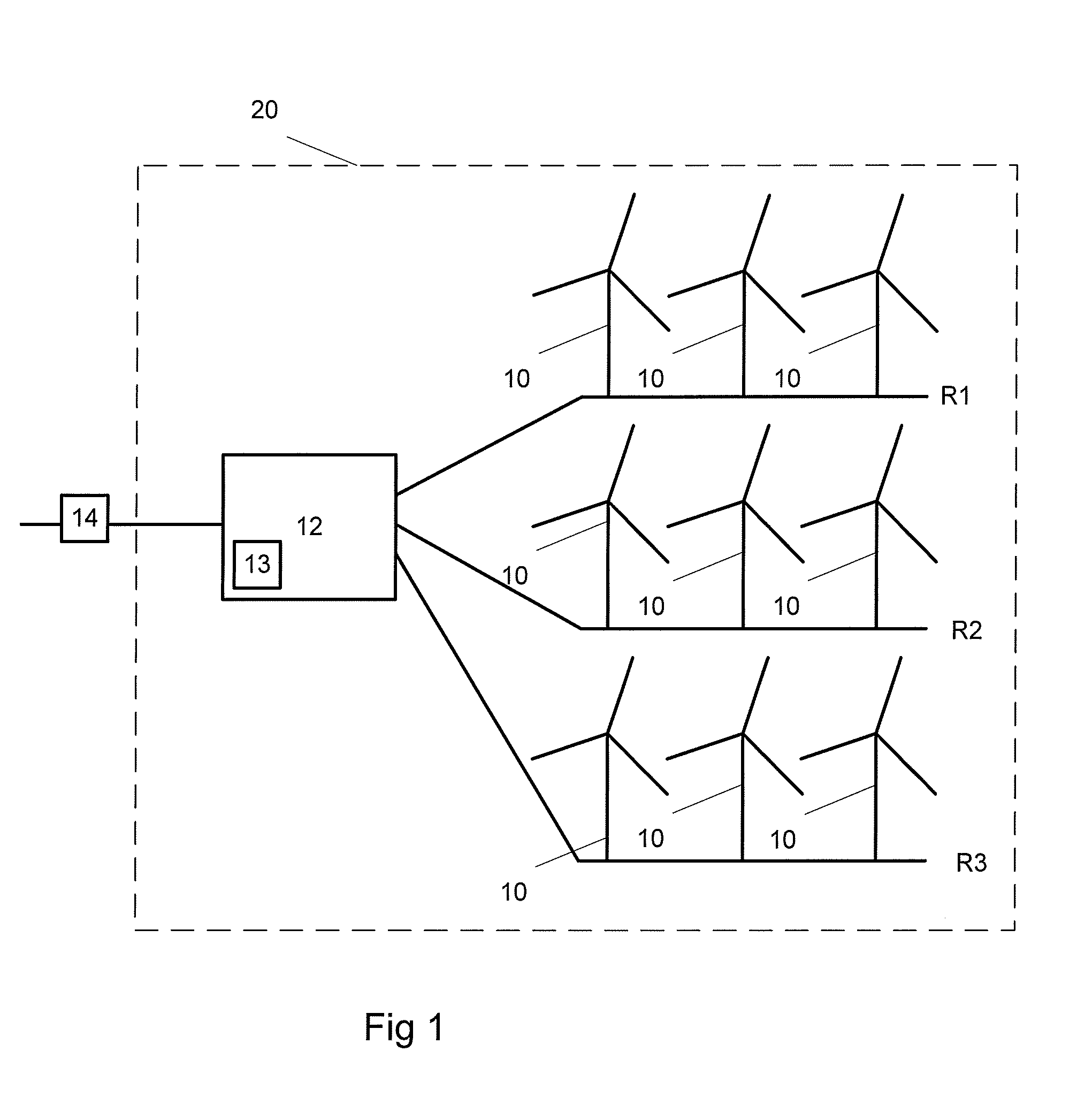Method of calculating an electrical output of a wind power plant
a technology of wind power plants and electrical outputs, applied in the direction of complex mathematical operations, engine control parameters, engine fuctions, etc., can solve the problems of large wind power plants that cannot meet the needs the dynamic influence of large-scale wind power plants on power systems is becoming an issue, and the detailed model requires excessive computational time, so as to enhance the precision of aggregated calculation and enhance the accuracy of electrical output calculation
- Summary
- Abstract
- Description
- Claims
- Application Information
AI Technical Summary
Benefits of technology
Problems solved by technology
Method used
Image
Examples
Embodiment Construction
[0046]FIG. 1 is a schematic drawing of a wind power plant 20 comprising three radials R1, R2, R3. In FIG. 1, three wind turbines 10 are on each of the three radials R1, R2, R3. It should be understood, that the number of radials and wind turbines 10 in FIG. 1 is limited for the sake of clarity and that a wind power plant 20 could comprise any appropriate number of radials each having any appropriate number of wind turbines 10. Each radial R1, R2, R3 is connected to a substation 12 in order to deliver electrical output from the wind turbines 10 to the substation and further on to a point of common coupling 14 to an electrical grid (not shown). The substation may comprise any relevant components (not shown in FIG. 1) in order to monitor and control the wind turbines 10 of the wind power plant 20, e.g. a SCADA server, a Power Plant Controller, as well as any electrical components (not shown in FIG. 1) necessary in order to perform electrical control of the output of the wind power park...
PUM
 Login to View More
Login to View More Abstract
Description
Claims
Application Information
 Login to View More
Login to View More - R&D Engineer
- R&D Manager
- IP Professional
- Industry Leading Data Capabilities
- Powerful AI technology
- Patent DNA Extraction
Browse by: Latest US Patents, China's latest patents, Technical Efficacy Thesaurus, Application Domain, Technology Topic, Popular Technical Reports.
© 2024 PatSnap. All rights reserved.Legal|Privacy policy|Modern Slavery Act Transparency Statement|Sitemap|About US| Contact US: help@patsnap.com










